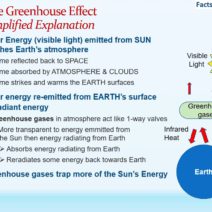Solar panels have captivated the global imagination, serving as a symbol of the clean energy revolution. The allure is not merely aesthetic; it stems from the profound scientific principles underpinning how these devices convert sunlight into usable power. This process is not only fascinating; it exposes the critical need for innovative solutions as the planet grapples with the repercussions of climate change.
At the heart of every solar panel lies the concept of photovoltaics, a term derived from the Greek word “photo,” meaning light, and “voltaics,” which refers to electric power. The fundamental mechanism involves the conversion of photons, the elementary particles of light, into electrons, the carriers of electric current. The process begins when sunlight strikes a solar cell, typically made from silicon, a semiconductor material. The energy from the sunlight dislodges electrons from their atomic bonds, generating a flow of electricity.
This transformation is facilitated through a precisely engineered structure. A solar cell consists of two layers of silicon—one doped with phosphorus (N-type) and the other with boron (P-type). When these two layers are placed together, they create an electric field at their junction. This electric field serves as a driving force, pushing the free electrons toward the conductive metal plates where they can flow into an external circuit. This delineation of charge carriers forms the basis for direct current (DC) electricity.
But what happens to the sunlight that does not get converted into electricity? Not every photon that strikes a solar panel is able to agitate electrons and thus contribute to electricity generation. In fact, various factors affect the efficiency of energy conversion. The angle of incidence, atmospheric conditions, and the cleanliness of the solar panel surface all play significant roles. Each element can detract from or enhance the panel’s ability to conserve energy derived from sunlight. This variability offers opportunities for advancements in technology aimed at improving efficiency rates, which currently hover around 15-22% for most commercially available modules.
Energy conservation in solar panels extends beyond the mere conversion of sunlight into electrical energy. The lifecycle of solar power encompasses the sourcing of materials, manufacturing, installation, and eventually, decommissioning or recycling of the solar panels themselves. Innovative designs are emerging that focus on sustainability, considering not only the efficiency in energy conversion but also the ecological footprint throughout their lifecycle. For instance, some manufacturers utilize recycled materials in their panels, while others invest in processes that minimize emissions during production.
Moreover, integrating energy storage solutions, such as lithium-ion batteries, enhances the sustainability of solar energy. While solar panels generate power primarily during daylight hours, energy storage systems allow excess energy produced during sunny periods to be stored and utilized later, thereby alleviating the intermittency issues inherent in solar energy. This coupling of generation and storage reinforces the resilience of solar power, enabling it to offer a more reliable energy source to homes and industries alike.
In conjunction with improving technologies, the geographic placement and scale of solar farms are increasingly relevant. Strategically located solar installations, often sited in areas with high insolation levels, can maximize energy generation. Large-scale solar farms can also benefit from economies of scale, producing electricity at lower costs, which is critical for widespread adoption. Conversely, decentralized solar installations at residential or community levels foster energy independence and can lead to an increase in local energy resilience. This is pivotal in the context of the climate crisis, where reliance on centralized fossil fuel power can pose significant vulnerabilities.
The role of policy and community engagement is equally crucial in advancing the adoption of solar power. Incentives such as tax credits, rebates, and grants can significantly mitigate the upfront costs associated with solar panel installation. Additionally, community solar programs that allow multiple households to share the benefits of a single solar installation democratize access to renewable energy. Such initiatives can empower under-resourced communities, further embedding equity in the transition toward sustainable power sources.
Another fascinating aspect of solar energy is its potential synergy with other renewable technologies. Integrating solar power with wind, hydro, and geothermal energy can create a diversified energy portfolio that enhances overall system reliability. This interplay underscores the necessity for a holistic approach to energy policy. Combining various renewable sources not only optimizes energy conservation but also builds a sustainable grid resilient to disruptions.
Lastly, the allure of solar technology transcends the realm of individual enhancement. It represents a beacon of hope in mitigating climate change. This connection between solar energy and environmental stewardship resonates deeply as global temperatures rise and climate-related disasters proliferate. As more individuals and communities embrace solar solutions, the collective impact on reducing greenhouse gas emissions becomes substantial.
In summary, the marvel of solar panels lies not only in their design and function but also in the intricate network of technological, environmental, and socio-political factors that inform their operation. From the basic conversion of sunlight into electricity to the broader implications for energy independence and global climate action, solar panels epitomize the potential to turn sunlight into sustainable power. The evolution of this technology and its adoption marks a significant stride toward a greener, more sustainable future—one where energy conservation is not just a goal but a way of life.







